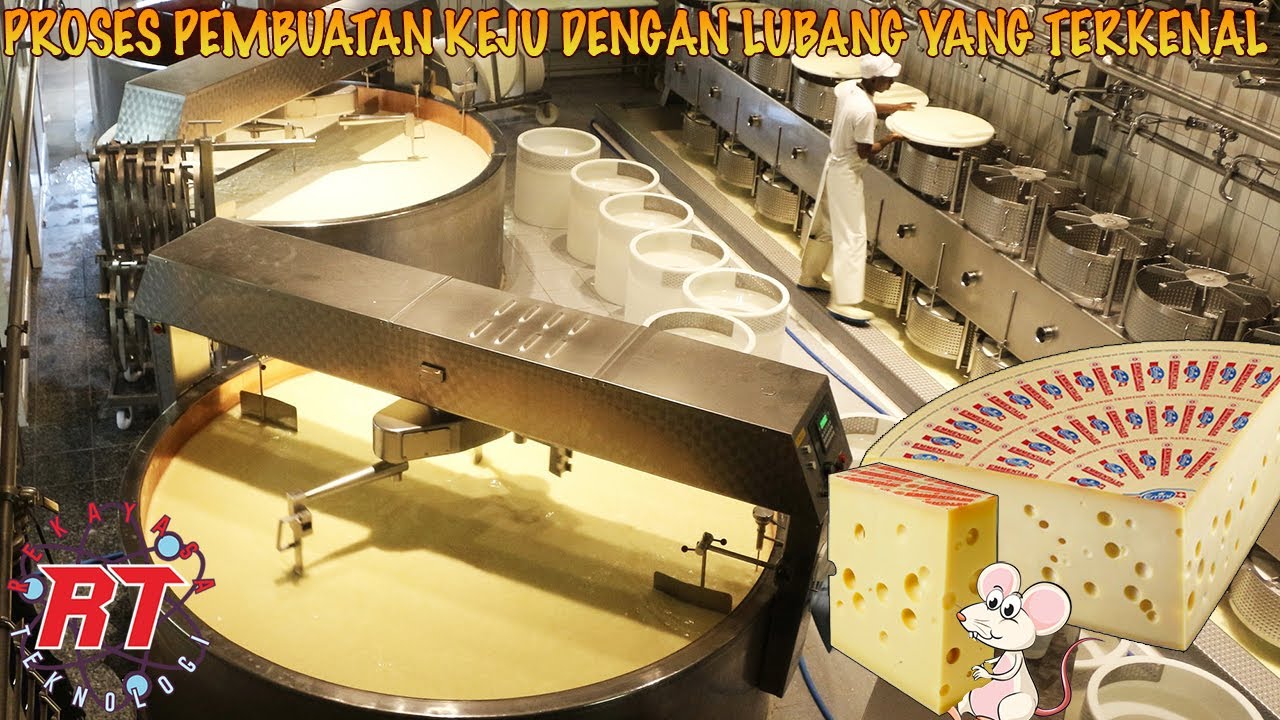How to make semi-hard cheese
Summary
TLDRThis video delves into the fascinating process of making semi-hard cheeses like Edam, Havarti, Gouda, and Emmental. It explains the careful steps from testing and heating milk to the addition of starter cultures and rennet, which help coagulate the milk. The curds are separated from the whey, heated, and drained in a specialized system. The cheese is then salted in brine before undergoing ripening, where it develops its unique flavor and texture. The video emphasizes how cheese, often taking years to mature, offers a diverse range of tastes and aromas thanks to these intricate processes.
Takeaways
- 😀 Humans have been consuming cheese for thousands of years, with evidence of ancient cheeses found in places like Siberian permafrost and Egyptian tombs.
- 😀 There is a wide variety of cheese types today, each with its unique taste and characteristics, but they all primarily consist of protein (casein) and fat.
- 😀 The main ingredient in cheese-making is milk, which is tested for quality, heated to kill harmful bacteria, and separated into cream and skimmed milk.
- 😀 Milk standardization is a crucial step, where a precise amount of cream is added back to the skimmed milk to ensure the right fat content.
- 😀 The actual cheese-making process begins with filling a vat with pre-treated milk and adding starter culture and rennet.
- 😀 Starter culture contains non-harmful bacteria that contribute to the cheese’s aroma, while rennet, which is an enzyme, helps coagulate the milk.
- 😀 After the milk coagulates, it is cut into curd grains and whey, separating solid cheese material from liquid.
- 😀 The whey is drained off, and the curd grains are heated to 38-45°C, depending on the type of cheese being produced, to help the curds firm up.
- 😀 The curds are then processed in a tetrapack casimatic system, where they are drained of whey and pressed into molds to form blocks or wheels of cheese.
- 😀 The cheese is then placed into brine (saltwater) for up to three days to enhance flavor and preserve it by preventing harmful bacterial growth.
- 😀 The final step in cheese-making is ripening, which gives cheese its unique texture, flavor, and aroma. Ripening times can range from 10 days to several years, depending on the cheese.
Q & A
What is the historical significance of cheese in human diet?
-Cheese has been part of the human diet for thousands of years. Evidence of cheese includes a 2000-year-old cheese found in Siberian permafrost and a 3000-year-old cheese discovered in an Egyptian tomb.
What are the primary components of cheese?
-Cheese primarily consists of protein, specifically casein, and fat. These components are consistent across different types of cheese, with the variations arising from the production methods.
What is the process of milk standardization in cheese making?
-Milk standardization involves testing the milk for quality, heating it to kill harmful bacteria, and then separating it into cream and skimmed milk. A precise amount of cream is then added back to achieve the desired fat content in the milk.
What role does the starter culture play in cheese production?
-The starter culture contains non-harmful bacteria that give the cheese its unique aroma and help in the fermentation process.
What is the purpose of rennet in cheese making?
-Rennet is a set of enzymes that causes the milk to coagulate, or thicken, which is an essential step in separating the curd grains from the whey in cheese production.
How did the source of rennet change over time?
-Historically, rennet came from the stomachs of calves, but today it is typically derived from special bacteria or yeast.
What happens after the milk reaches the right level of coagulation?
-Once the milk reaches the correct coagulation, it is cut into curd grains, and the whey (liquid) is separated. The curds are then drained of whey, which accounts for about 30% of the mixture.
How is the curd mixture heated during cheese production?
-The curd and remaining whey mixture is heated by adding warm water, bringing the temperature to about 38 to 45 degrees Celsius, depending on the type of cheese being produced. This process helps the curd grains firm up.
What is the role of the tetrapack casimatic system in cheese production?
-The tetrapack casimatic system is used to drain off the whey from the curd mixture. It includes buffer tanks and a draining column where the curds are pressed and shaped into blocks or wheels.
How does the salting process contribute to cheese production?
-The cheese is placed in salt water (brine) for 12 hours to 3 days, depending on the type. This process adds flavor to the cheese and helps preserve it by preventing harmful bacterial growth.
Outlines

このセクションは有料ユーザー限定です。 アクセスするには、アップグレードをお願いします。
今すぐアップグレードMindmap

このセクションは有料ユーザー限定です。 アクセスするには、アップグレードをお願いします。
今すぐアップグレードKeywords

このセクションは有料ユーザー限定です。 アクセスするには、アップグレードをお願いします。
今すぐアップグレードHighlights

このセクションは有料ユーザー限定です。 アクセスするには、アップグレードをお願いします。
今すぐアップグレードTranscripts

このセクションは有料ユーザー限定です。 アクセスするには、アップグレードをお願いします。
今すぐアップグレード関連動画をさらに表示

PROSES PEMBUATAN KEJU SWISS EMMENTALER YANG TEKENAL DENGAN LUBANG KEJU YANG UNIK

Kepoin Pabrik Pembuatan Keju Kanada | SI UNYIL (12/05/20)

Kepoin Proses Pembuatan Keju Susu Sapi Khas Australia | SI UNYIL (30/10/20)

The Delicious Science of CHEESE!

How Is Cheese Made?

Meselson and Stahl Experiment | Class 12 Genetics | NEET Biology
5.0 / 5 (0 votes)
